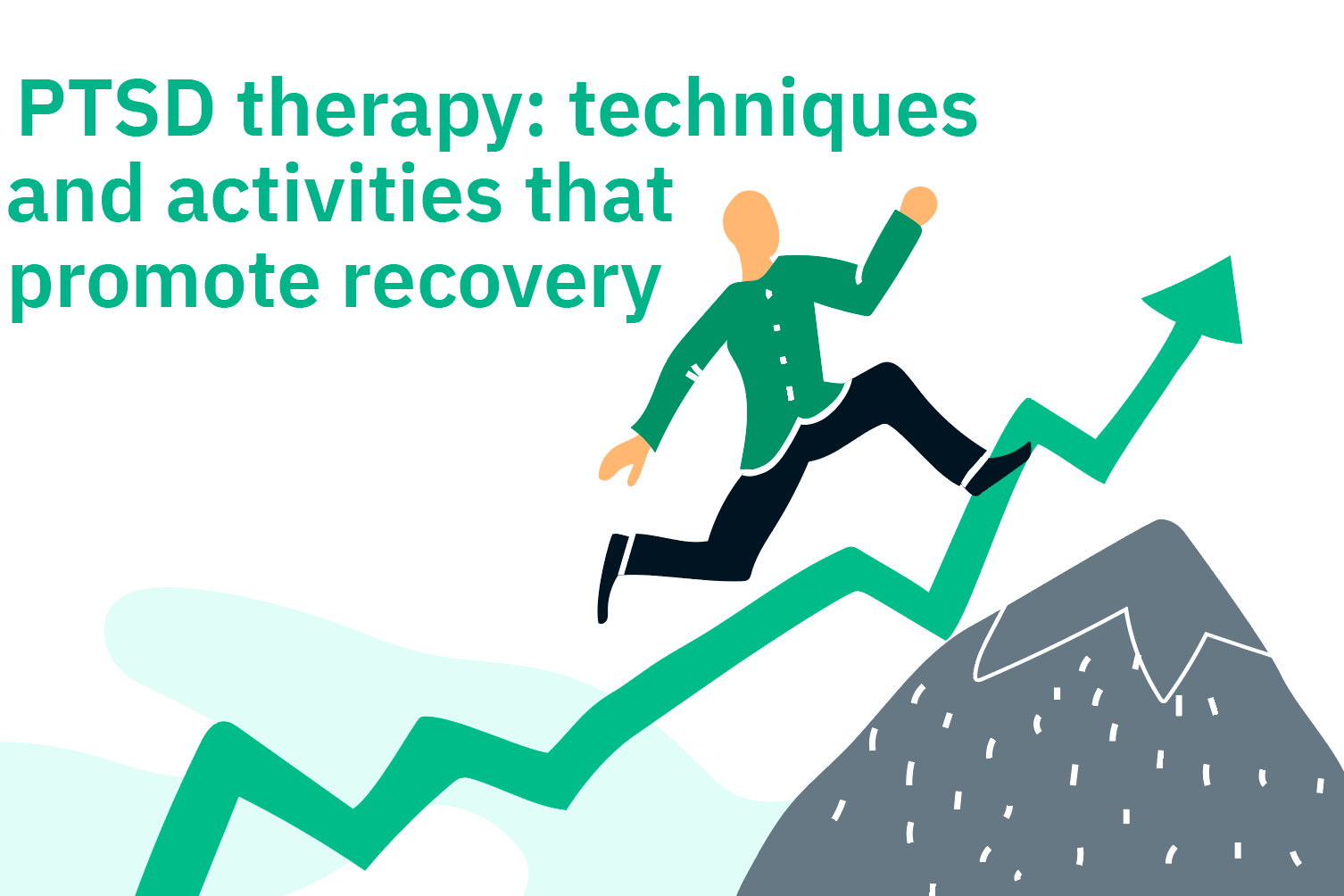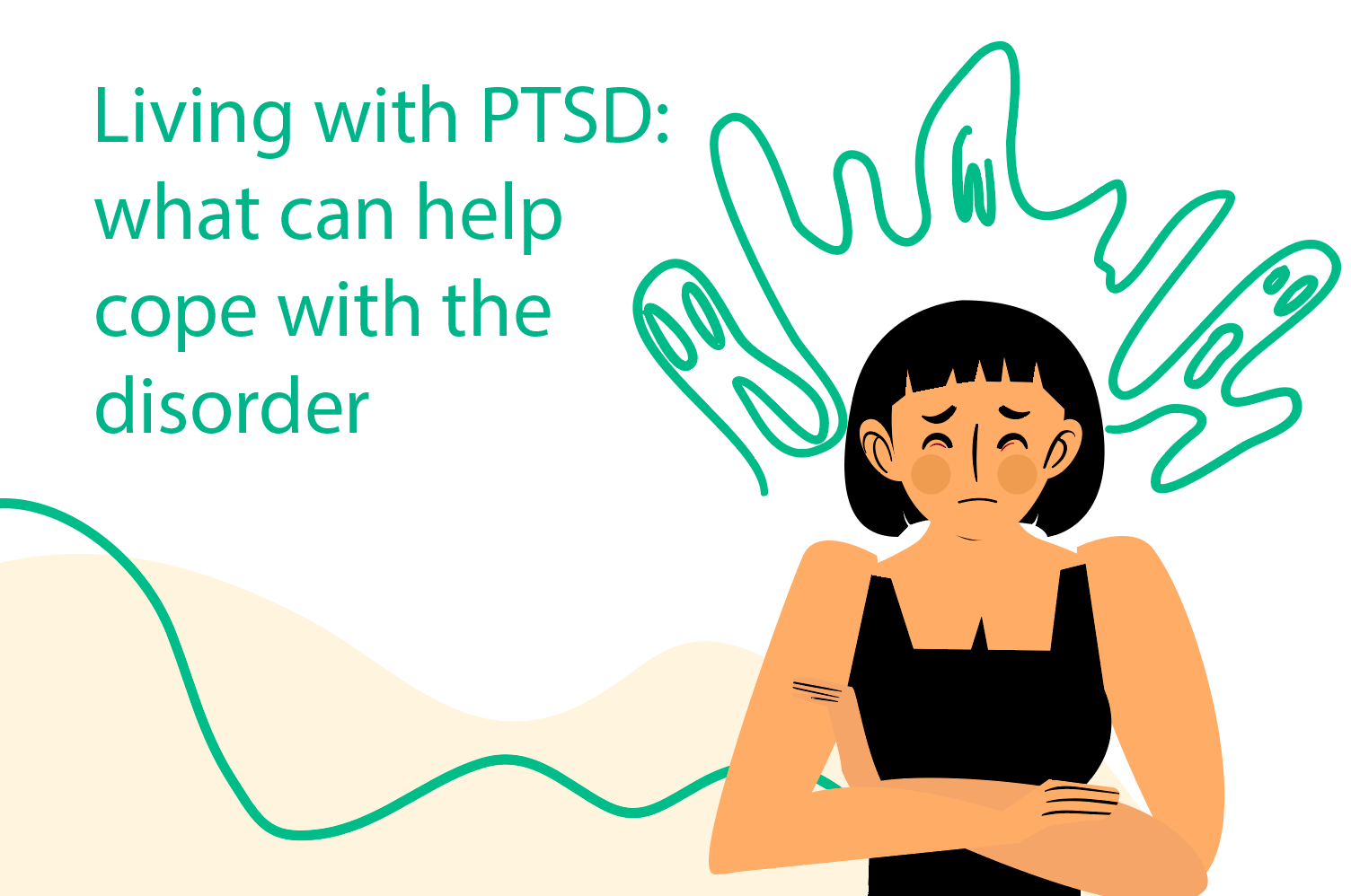
- Home
- PTSD: information for patients
- Hypervigilance in PTSD: symptoms, specifics of therapy

Hypervigilance in PTSD: symptoms, specifics of therapy
Vigilance is one of the ways your body is protecting you from threatening situations. After a traumatic event, the feeling of danger may persist for a long time and be accompanied by the development of hypervigilance.
Chronic hypervigilance may be a common manifestation of posttraumatic stress disorder (PTSD). More details information about PTSD can be found in a separate article.
Symptoms of hypervigilance while having PTSD
One of many symptoms of PTSD is heightened vigilance (hypervigilance).
Hypervigilance is manifested by a sense of threat in safe situations, places with people. Even a familiar environment and people can be a problem, as hypervigilance can push a person to keenly assess the details that were previously overlooked—body language, a person’s voice and tone, their mood, facial expressions.
Hypervigilance can be characterized by four general features:
- Exaggeration of threat. Overly vigilant people will look for threats that are either unlikely or exaggerated.
- Obsessively avoid perceived threats. A person well ahead of time avoids places where, in his opinion, threatening situations may arise (for example, social gatherings). In extreme cases, a person may develop agoraphobia - a kind of obsessive fear that consists of a combination of phobias of different types: a feeling of fear of the crowd, the fear of staying unaccompanied in open areas, in public places, in transport.
- Increased fear reflex. This is an abnormal reaction in which a person flinches at any sudden noise, movement, or surprise, even in the middle of the night. Being in a new environment can further heighten the reaction.
- Physiological symptoms caused by adrenaline. People with PTSD-related hypervigilance often have a persistent adrenaline-release response that is manifested by dilated pupils, increased heart rate, and increased blood pressure.
Some other common manifestations of hypervigilance include:
- Lack of objectivity.
- Overanalyzing what people see or think about us.
- Being unaware of what is obvious to others.
- Anxious, restless appearance, the person cannot sit still.
- Reluctance to try new things or meet new people.
- Sometimes people with hypervigilance can’t talk because they get distracted by some details/sounds and can’t concentrate.
- Constant concern for others.
- Effects on sleep: Someone may be very afraid of falling asleep, and when asleep the person can completely wake up because of the slightest noise, and due to the surge of adrenaline, it can be very difficult to fall asleep again.
- Catastrophizing: The panic associated with hypervigilance only makes the person focused on the negative, and so the person unintentionally creates a situation that will consciously lead to failure.
Many hypervigilant people do not see their reactions as unreasonable. They may feel that their actions are necessary to stay safe after the trauma. However, if hypervigilance interferes with daily activities, then it must be treated as part of posttraumatic stress disorder.
In order to understand how strong your feeling of anxiety in PTSD is you can take a test.

Hamilton scale to assess anxiety (HAM-A)
Specifics of therapy
Treatment for hypervigilance may differ depending on the underlying cause as well as the severity of the behavior.
The first step in therapy is to separate the person from the environment where there is a real threat (for example, in cases of domestic violence) or where the potential threat may be real (for example, police work).
Treatment may include psychotherapy or drug therapy:
- Cognitive Behavioral Therapy. This is a talking therapy that can help you change the way you think about PTSD: feel better and behave differently. Usually, this type of therapy of PTSD is carried out one on one, sometimes it can occur in groups.
- Exposure therapy. The goal of exposure therapy is to expose you to stress triggers. This will help you recognize them in your life and find ways to respond more gently.
- Method of desensitization and processing with the help of eye movements. This is a technique that uses eye movements to help the brain process traumatic memories and gradually reduce PTSD. You will be asked to recall the traumatic experience and how it makes you think and feel. During this, you need to perform eye movements or receive some kind of “bilateral stimulation”, such as tapping your hands. This reduces the intensity of the emotions a person feels about the traumatic memory, helping to resolve the trauma.
- Medicines. In the treatment of PTSD and their anxiety disorders, antidepressants, anti-anxiety (anxiolytic) drugs can be used. However, only a doctor may prescribe the medicine, as well as define the duration and regimen of application.
Hypervigilance is one of the symptoms of PTSD and cannot be treated alone. Therapy for hypervigilance depends on proper treatment of the underlying disorder, and in some cases, hospitalization may be required to control symptoms.
Practical advice
Hypervigilance can completely take over the lives of people suffering from posttraumatic stress disorder. Knowing what hypervigilance is, take advantage of our tips, some of which may help you feel a little calmer.
- Transparent shower curtain. For some, a simple shower curtain, combined with being in the small enclosed space of a bathroom, can contain the “unknown”. If you feel something like this, try changing your shower curtain to a transparent one.
- Lighting. Darkness can cause fear even in people without PTSD. If you feel uncomfortable because of the darkness, consider installing a motion sensor near the front door, install a night light in the bedroom and hallway nearby.
- Security alarm. If hypervigilance prevents you from falling asleep due to the fear of strangers in the apartment, a security alarm with a special mode for the night period will help you.
- Position your furniture according to your needs. For example, place the sofa so that you can see the door or windows while watching TV.
- Listen to music. For some, listening to music means they can’t hear what is going on around them. For others, playing quiet music in headphones while walking can distract attention to any sudden sounds.
Remember that sometimes even small things can increase your sense of security.
Sources:
- Frequently Asked Questions
- The presence of excessive vigilance associated with PTSD can be indicated by such signs as an exaggeration of threats or constant obsessive fear, flinching at any noise, as well as physiological manifestations - dilated pupils, high blood pressure, heart palpitations that occur with a sense of danger.



